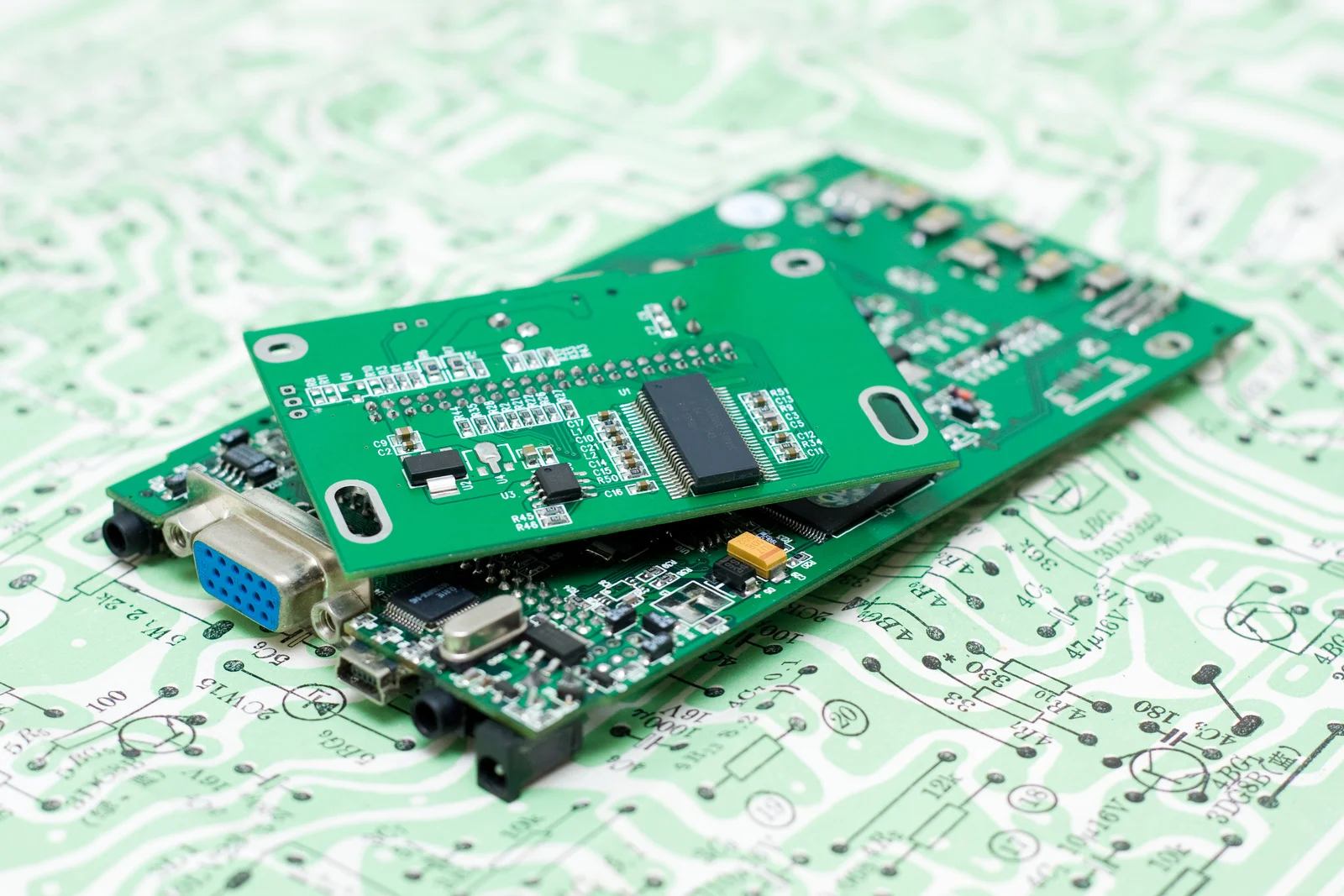
In the development of advanced electronic products, a working prototype is only the first step. Even the most meticulously engineered design can encounter significant challenges during mass production if manufacturability is not considered from the outset. Without early-stage optimisation, production may become costlier, slower, and prone to higher failure rates, creating delays and inefficiencies that impact both timelines and budgets.
This is precisely the scenario that Design for Manufacture (DFM) is designed to prevent. In electronics manufacturing, DFM involves designing printed circuit boards (PCBs) and assemblies to be easy, reliable, and cost-effective to produce at scale, while maintaining the required performance standards. By integrating DFM principles early in the design process, engineers can reduce costly rework, minimise production delays, and significantly enhance product quality.
At Contract Production Ltd, we collaborate with our clients from the earliest design stages, providing expert DFM reviews that ensure each design is optimised for manufacturing efficiency, cost control, and long-term reliability.
In this article, we will dive into:
-
- What Exactly is Design for Manufacture (DFM)?
- Why DFM is Crucial in Electronics
- Common DFM Considerations in PCB Design
- DFM for SMT vs. Through-Hole Assembly
- The Role of Collaboration in DFM
- Tools & Technologies Used in DFM
- DFM for High-Reliability Industries
- Common Mistakes When Ignoring DFM
- DFM and Sustainability
- Frequently Asked Questions (FAQs)
- Conclusion
1. What Exactly is Design for Manufacture (DFM)?
DFM is the process of optimising a design so it can be manufactured efficiently and accurately using available tools, methods, and materials.
It’s not just about making the product work; it’s about making it work in the real world of mass production.
In electronics, DFM specifically focuses on:
-
- PCB layout for automated assembly.
- Component selection based on supply availability.
- Tolerances for manufacturing repeatability.
- Minimising complexity without losing functionality.
Think of it as the bridge between your engineering blueprint and the factory floor.
With Contract Production Ltd, this bridge is strengthened by decades of experience in electronics manufacturing, the use of advanced CAD tools, simulation software, and in-house engineering support.
2. Why DFM is Crucial in Electronics?
Reducing Manufacturing Costs
Poorly designed boards can require extra handling, special tooling, or multiple reworks.
For example, placing large connectors too close to tall components may force manual assembly instead of automated pick-and-place, adding hours of labour.
Contract Production Ltd ensures that every design is optimised to minimise manual intervention and maximise cost-efficiency.
Improving Reliability
If your design pushes the limits of what the manufacturing process can reliably produce, defect rates will increase.
DFM ensures your tolerances, pad sizes, and soldering points are well within process capabilities.
At Contract Production Ltd, we apply strict quality controls and manufacturing expertise to reduce defects and ensure consistency in every batch.
Shortening Time-to-Market
Every design revision delays product launch. Catching manufacturability issues early means fewer revisions, faster approvals, and quicker production runs.
Our team provides rapid feedback and in-house DFM analysis, helping customers bring products to market ahead of schedule.
3. Common DFM Considerations in PCB Design
Component Placement
-
- Avoid placing components too close to the PCB edge (risk of damage during handling).
- Maintain adequate clearance between large components for automated soldering access.
- Group related components to minimise trace lengths and improve signal integrity.
Hole Sizes and Tolerances
-
- For through-hole components, ensure drill sizes match lead diameters with proper tolerances.
- Avoid unnecessary hole size variations to slow down drilling.
Panelization
-
- Instead of manufacturing single boards, group multiple boards into a panel for faster assembly.
- Include breakaway tabs or v-scoring for easy separation after production.
Solder Mask & Paste Design
-
- Ensure proper clearance between the solder mask and pads to prevent solder bridging.
- Use solder paste apertures sized for your component pitch.
Test Point Accessibility
-
- Provide labelled test pads so quality control teams can quickly connect probes for electrical testing.
4. DFM for SMT vs. Through-Hole Assembly
For SMT:
-
- Use standard package sizes wherever possible (0402, 0603, 0805, etc.).
- Ensure spacing between components matches pick-and-place tolerances.
For Through-Hole:
-
- Keep lead lengths short for mechanical stability.
- Arrange high-power components to manage heat dissipation.
Whether you require Surface Mount Technology (SMT) or Through-Hole Assembly, Contract Production Ltd has the expertise, equipment, and processes to handle both with precision.
5. The Role of Collaboration in DFM
DFM is not a solo process; it’s a partnership between the design team and the manufacturer.
Best Practices for Collaboration:
-
- Involve your manufacturer early, ideally during the schematic stage.
- Share your Bill of Materials (BOM) to check component availability.
- Ask for a DFM review before finalising Gerber files.
At Contract Production Ltd, our Design for Manufacture service includes early-stage feedback, helping customers avoid costly redesigns.
Learn more about our DFM services
6. Tools & Technologies Used in DFM
-
- CAD Software with DFM Checks: Altium Designer, KiCad, Eagle.
- Automated Optical Inspection (AOI) Simulations: To catch spacing and soldering issues before production.
- Pick-and-Place Simulation: Ensures machine-friendly component layouts.
- Panelization Software: Optimises board arrangement for cost savings.
7. DFM for High-Reliability Industries
In sectors like automotive, aerospace, and oil & gas, DFM takes on additional considerations:
-
- Automotive: Vibration-resistant solder joints, component derating for temperature extremes.
- Aerospace: Weight reduction while meeting mechanical robustness standards.
- Oil & Gas: Corrosion-resistant materials and conformal coatings.
8. Common Mistakes When Ignoring DFM
-
- Excessive Component Variety: Increases procurement complexity and cost.
- Tight Tolerances Beyond Machine Capability: Leads to high defect rates.
- Neglecting Thermal Relief in Pads: Makes soldering inefficient.
- Placing Test Points Under Components: Prevents proper quality checks.
9. DFM and Sustainability
By designing with manufacturing efficiency in mind, you also reduce:
-
- Material waste from unnecessary board cuts or misaligned components.
- Energy consumption by shortening production cycles.
- E-waste by improving product reliability and lifespan.
By partnering with Contract Production Ltd, customers also benefit from sustainable manufacturing practices, reduced waste, optimised energy use, and longer product life cycles.
10. FAQ – Design for Manufacture (DFM) in Electronics
Q1: When should DFM be considered?
From the very beginning of your project, ideally during the initial concept and schematic stage. At Contract Production Ltd, we provide early DFM input to ensure your design is production-ready from day one.
Q2: Does DFM limit design creativity?
Not at all. Effective DFM integrates design innovation with manufacturing feasibility, enabling engineers to explore creative solutions while ensuring practical, reliable, and cost-effective production. At Contract Production Ltd, our collaborative approach often uncovers new design opportunities, optimising both performance and manufacturability without constraining the engineer’s creative vision.
Q3: Can DFM reduce defects?
Yes. DFM is one of the most effective ways to improve first-pass yield. Our experienced team uses proven techniques and inspection tools to identify and eliminate potential issues before production.
Q4: Is DFM only for high-volume production?
No. Even prototypes and low-volume runs benefit from manufacturability optimisation. Contract Production Ltd tailors DFM strategies to suit your production scale and budget.
Q5: Who is responsible for DFM?
It’s a collaborative effort between the design engineer and the manufacturer. Contract Production Ltd acts as your manufacturing partner, working closely alongside your design team to ensure every detail is production-optimised.
11. Conclusion
Design for Manufacture isn’t just a technical consideration; it’s a strategic advantage. By integrating manufacturability into the early stages of design, you reduce costs, speed up time-to-market, and improve product reliability.
If you’re planning your next PCB or electronics project, consider partnering with a manufacturer that offers early-stage DFM reviews. It’s one of the smartest investments you can make.
At Contract Production Ltd, we specialise in DFM for electronics, helping customers transform great ideas into market-ready products with fewer revisions and higher quality. Whether you’re developing a complex industrial PCB or a simple control unit, our in-house expertise, advanced assembly technology, and collaborative approach ensure your project moves from concept to production success with confidence.
If you want your next electronics project to be efficient, cost-effective, and production-ready, partner with Contract Production Ltd, where design meets manufacturing excellence.








